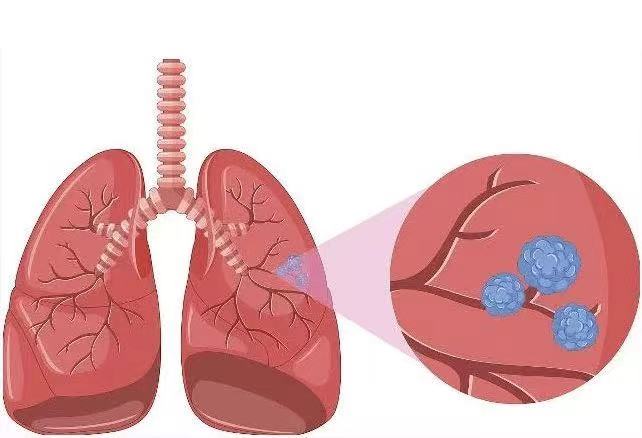| Overview Primary lung cancer is the leading cause of cancer-related death worldwide. In addition to primary cancers, lungs are the second most frequent site of metastatic disease. Lung cancer is a type of cancer that begins in the lungs. Lung cancer is the leading cause of cancer deaths worldwide. People who smoke have the greatest risk of lung cancer, though lung cancer can also occur in people who have never smoked. The risk of lung cancer increases with the length of time and number of cigarettes you've smoked. If you quit smoking, even after smoking for many years, you can significantly reduce your chances of developing lung cancer. Symptoms Lung cancer typically doesn't cause signs and symptoms in its earliest stages. Signs and symptoms of lung cancer typically occur when the disease is advanced. Signs and symptoms of lung cancer may include: a new cough that doesn't go away, coughing up blood, even a small amount shortness of breath chest pain, hoarseness, losing weight without trying, bone pain, headache |  |
Treatment
Currently, RFA is the most widely used ablation technique for the treatment of solid lung tumors. Through inserting radiofrequency electrodes into the tumor tissue and the application of 375–500 kHz frequency with alternating current, mutual friction, and collisions of ions within the tumor tissue produce thermal biological effects to raise the local temperature up to 60°C–120°C. When the tissue is heated to >60°C, cell coagulation necrosis may occur. (1) As a precise, minimally invasive treatment technology, tumor thermal ablation utilizes biological effects of heat to directly cause irreversible injury or necrosis of tumor cells in one or more tumor lesions that are located in a certain organ. Radiofrequency ablation (RFA), microwave ablation (MWA), and cryoablation are the main technologies for GGN. (1) In a study, a total of 1,387 participants from 14 trials were included in the final analysis. Patients treated with RFA combined with chemotherapy significantly improved OS compared with those treated with chemotherapy alone [HR 0.50, 95% confidence interval (CI) 0.41–0.61; p < 0.00001], with an absolute difference at 12 months of 29.6% (95% CI 23.7–35.5), at 24 months of 19.2% (95% CI 10.1–28.2), and at 36 months of 22.9% (95% CI 12.0–33.7). No statistically significant difference was observed in the subgroups of case type, cancer type, chemotherapy drugs, and tumor size. The HR for OS with RFA plus chemotherapy vs. RFA alone was 0.53 (95% CI 0.41–0.70; p < 0.00001), corresponding to a 27.1% (95% CI 18.3–35.8), 31.0% (95% CI 19.9–41.9), and 24.9% (95% CI 15.0–34.7) absolute difference in survival at 12 months, 24 months, and 36 months, respectively. Subgroup analysis by geographic region and TNM stage showed that RFA combined with chemotherapy still significantly improved OS compared to RFA. The HR of RFA vs. chemotherapy was 0.98 (95% CI 0.60–1.60; p = 0.94), with an absolute difference at 12 months of 1.4% (95% CI -19.2 to 22.1), at 24 months of 7.8% (95% CI -11.3 to 26.8), and at 36 months of 0.3% (95% CI -13.2 to 13.8). The overall indirect comparison of OS for RFA vs. chemotherapy was 0.95 (95% CI 0.72–1.26; p = 0.74). Data on progression-free survival were not sufficiently reported. Therefore, RFA combined with chemotherapy might be a better treatment option for patients with lung cancer or pulmonary metastases than chemotherapy alone or RFA alone. (2)
Reference list:
1. Ye X, Fan W, Wang Z, Wang J, Wang H, Wang J, et al. Expert consensus on thermal ablation therapy of pulmonary subsolid nodules (2021 Edition). J Can Res Ther 2021;17:1141-56.
2. Yang Z, Lyu X, Yang H, Wang B, Xu D, Huo L, Zhang R, Huang Y and Diao B (2023) Survival after radiofrequency ablation and/or chemotherapy for lung cancer and pulmonary metastases: a systematic review and meta-analysis. Front. Immunol. 14:1240149. doi: 10.3389/fimmu.2023.1240149